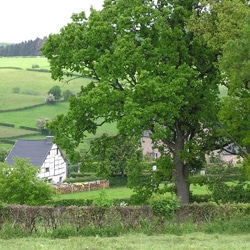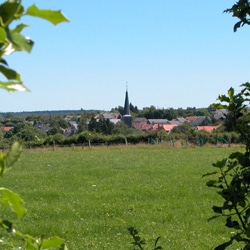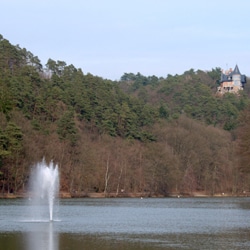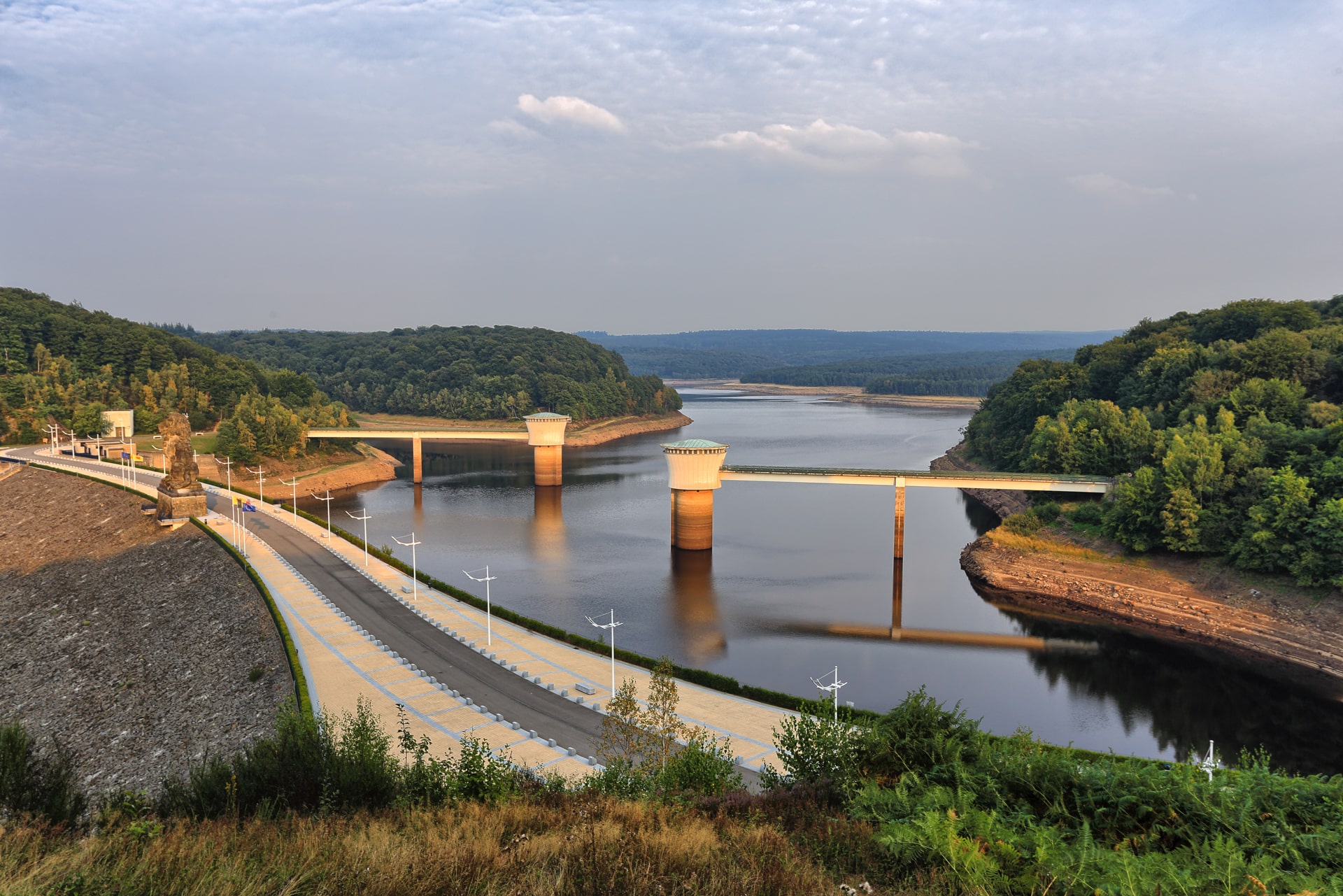Sart
Sart is one of the oldest villages of the Ardennes where traditional country life still plays a very active role. The many farms give this municipality open meadow landscapes, where its typical character is retained. Sart means "ground which is cleared of trees and shrubs"; and cultivated by the farmers early in the middle ages. The name first appeared in 1131, referring to a chapel called "Sartum". Sart flourished in the 15th century when the iron deposits of the Hoëgne were fully developed. Many famous smelters and forges were in existence during this time. The trade with the principality of Luik and even with the German sovereigns was notable. In 1468 Charles the Bold, duke of Burgundy, laid waste to the counties of Luik "by fire and sword". Franchimont and Sart in particular, did not escape either. Sart, however, revived its metallurgy in the 17th century and through the 18th century. Now agriculture is the main economic driver for the municipality of Sart.


Tiège
Tiège has a long past where many roads meet. These roads were indispensable for the economic development of the region. For centuries they were also used by armed forces from all over Europe which made Tiège, Jalhay and Sart a land of invasions. From 1907 to 1952 the tram brought many tourists to Tiège too. The landscape alternates holiday homes and traditional farms, which still exist.
Foyr
The forest is mainly composed of hazel trees ("côreu" in Walloon). These trees are found at the southwest and west side of this hamlet. These forested lands, located in the heart of the Ardennes, have been cleared and turned into pastures, where dairy cattle graze. Fouir is situated at the head of the valley, where it is protected against the wind and with a plentiful supply of natural springs. The hamlet is situated on a south-facing slope ("l'adret") ideally placed to benefit from the warmth of the sun. Along the Hautes Fagnes (High Fens) Plateau, farmhouses resemble the longhouse architecture, typical for this region. Barns are frequently added.


Jalhay
Jalhay is a village at the foot of the High Fens at 400m above sea level. The Franks who came here in the IV and V century are at the origin of Jalhay. Charlemagne made Jalhay to his hunting domain. The King of Lorraine took territory which belonged to the Abbey of Stavelot and donated it to the Prince-Bishop of Liège. That changed the area into pasture. Along the Hoëgne the soil contained a lot of iron. This brought a lot of prosperity in the metal industry during the 14th till the 17th century. But in 1468, the Burgundian Duke Charles the bold destroyed the smelters as they had forged the weapons for the famous «600 Franchimontois», who had fought him in Liège. He plundered the region and reduced the «makas» (rounding hammers) to scrap. Since then the municipality concentrates to agriculture. Starting from the XV century, the Prince-Bishop of Liège granted rights to the citizens of Jalhay, Sart and Surister, such as the right to have a local courthouse, the title of city, the ability to choose a mayor, trademarks etc. The perrons in Sart and Surister still testify of those days. Jalhay had already aldermen in 1405. Much later under Napoleon, Jalhay lost its rights and influence…….
Nivezé
The village consisted mainly of rural and agricultural land with small farms. It had a strong expansion in the nineteenth century to become an extension of Spa with new constructions and above all, luxury villas from the rich bourgeoisie. Around the turn of the 18th century springs at Nivezé were exploited. In 1867, the springs at Niveze provided the Thermes of Spa. The spring water has a high iron content of excellent quality. The spring is captured near the Warfaaz Lake and source of Wellington. This spring has received the name of "Marie-Henriette". The water is naturally slightly sparkling and currently commercialized under this name by Spa Monopole. Nivezé is administratively cut into two, devided by the stream "Le Soyeuru", between Spa and Jalhay-Sart.


Charneux
The name "Charneux" dates back to Roman times and means beech bushes. The first houses were built here in a protected area at the edge of a beech forest. In the period before the French Revolution the Gospinal forest, between the Statte, the Hoëgne, the Sawe, the river Dison and Piron-Cheneu, belonged to the Prince-Bishop of Liège. The former border posts (FDP) delineated forest areas owned by the prince bishop of Liège. Residents were not allowed to harvest trees in these forests. With the arrival of iron forges the demand for charcoal only went up and deforestation became a problem. In 1788, to protect the forests from illegal tree harvest, the Principality placed stone pilars to demarte the forest reserves. At least 480 stone pillars were placed at 13 forest reserves in the Principality, including those near Jalhay and Sart. Stone pillars replaced the original wooden posts. In the forest of Gospinal 71 border posts were placed and today 6 are visible along the Hoëgne.
Surister
Surister is a street village situated on a ridge (watershed) between two rivers. In the middle ages, you could find a grain mill for common use on this road to Jalhay, the castle of the lord and a perron. At the end of the village stood the gallow. Until the French Revolution Surister was a fief, granted by the Prince-Bishop of Liège, in contrast to Jalhay, who together with Charneux and Foyr was directly dependent on the Prince-Bishop. Surister is still called "la Petite France", due to the family Groulard, who came from Dinan in Brittany and who prevailed over Surister.


Sowalster
The name Solwaster comes from "solistat", or "at the Statte" and the citizens of this beautiful village are called the "Lopets". Solwaster is a typical village in the Ardennes, located on a hill between the river Hoëgne and Statte. The village has the charm of a characteristic pastoral village from the 19th century at the foot of the natural park High Fens. In 1981 it was rated one of the most beautiful villages in Belgium.
Herbiester
Herbiester is a village in the countryside of Jalhay. The name Herbiester comes from the family name Herbert, and ster means clearing of land and deforestation.






